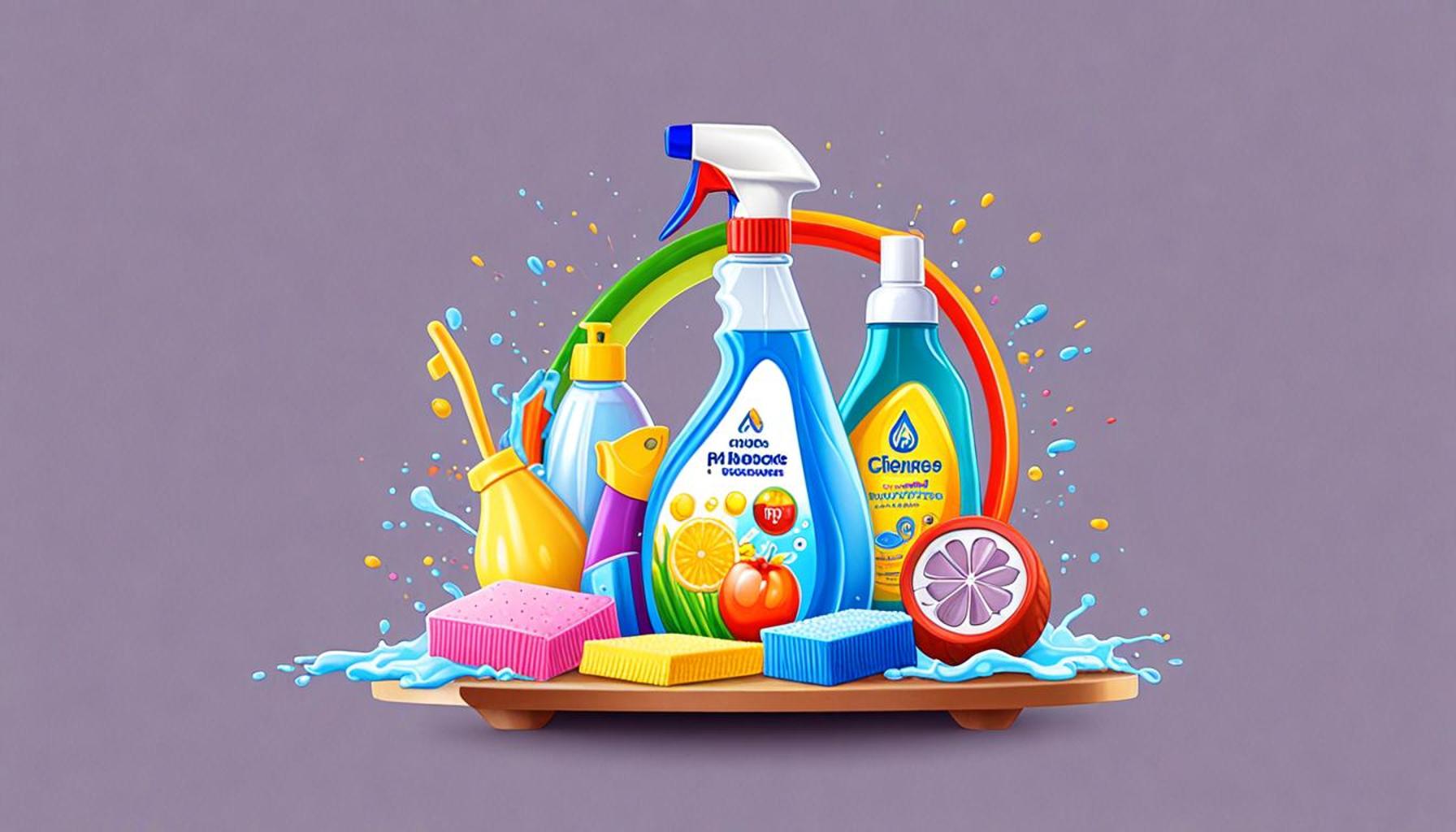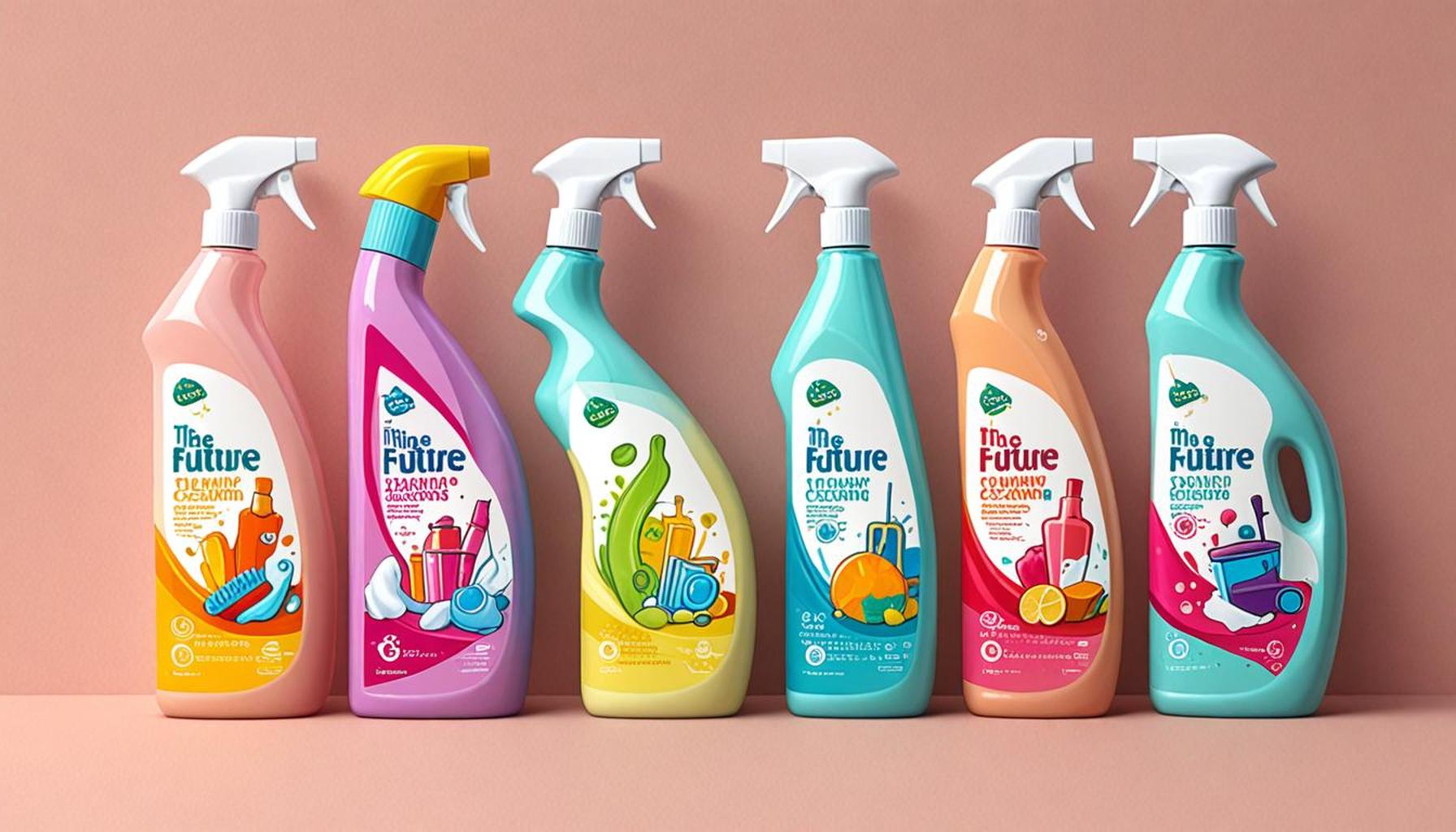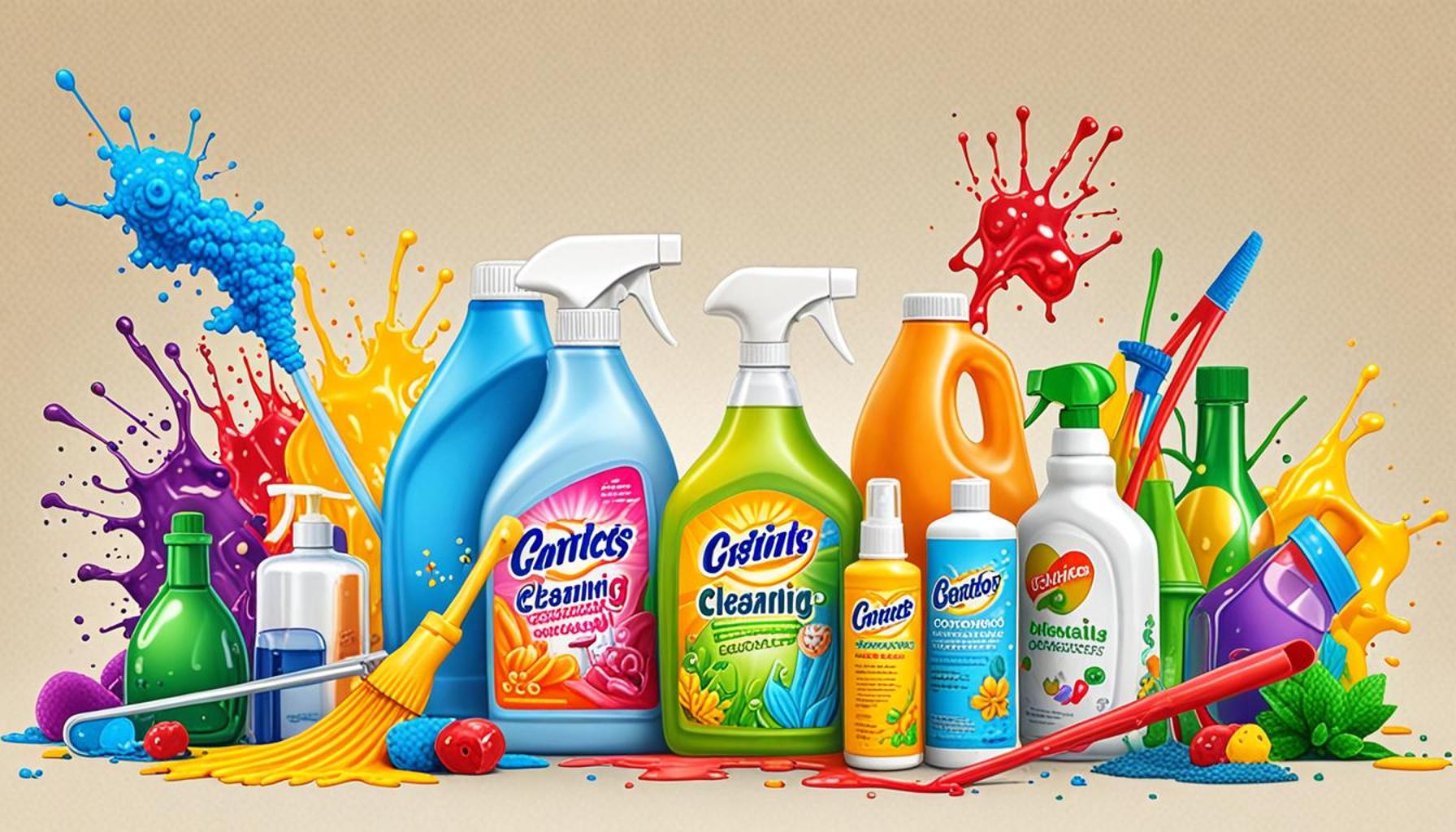The Importance of pH Balance in Cleaning Products: How It Affects Effectiveness and Safety

The Role of pH Balance in Cleaning Products
In the realm of household cleaning, the effectiveness of a product often hinges on one critical attribute: pH balance. This balance, measured on a scale from 0 to 14, dictates whether a solution is acidic, neutral, or alkaline. Understanding this balance can unlock the secrets to smarter, safer, and more effective cleaning.
One of the primary reasons why pH balance is vital in cleaning products is their effectiveness in tackling various types of dirt and stains. For instance, acidic cleaners, typically falling between 0 and 7 on the pH scale, are particularly adept at dissolving mineral deposits and lime scale, making them the go-to option for bathroom cleaning. Products like vinegar or citric acid-based cleaners serve as excellent examples; they not only eliminate tough deposits but also leave surfaces shining. On the other hand, alkaline cleaners, which range from 8 to 14, excel at breaking down greasy and oily residues. Common household items like baking soda or ammonia-based cleaners are quintessential examples, ideal for kitchens and areas prone to buildup from culinary activities.
Besides effectiveness, safety is another compelling reason to consider pH levels when selecting cleaning products. Certain products with extreme pH levels can be corrosive, presenting risks not only to skin and eyes but also to various surfaces within the home. For example, high-pH cleaners can discolor fabrics or damage finishes on furniture. By opting for pH-balanced products—typically those around 7—consumers can mitigate such risks, ensuring both personal safety and the integrity of their possessions.
The environmental impact of cleaning products is gaining significant attention, particularly as consumers become more environmentally conscious. Maintaining a neutral pH helps reduce the toxicity of cleaning agents in wastewater, which can be especially beneficial for local wildlife and ecosystems. When people use products with extreme pH levels, they risk contaminating water supplies, affecting aquatic life and altering natural habitats. Eco-friendly cleaning brands are increasingly formulating products that not only perform well but also adhere to environmentally responsible pH considerations.
As public awareness grows regarding the ingredients in cleaning supplies, understanding pH balance has never been more crucial. However, consumers often find product labels laden with scientific terms that can be confusing. As such, taking the time to learn about the implications of pH not only aids in making informed choices but also contributes to healthier living environments.
In the following sections, we will explore the intricate relationship between pH balance, effectiveness, and safety in cleaning products. By dissecting the science behind pH, readers will gain insights into selecting the right cleaners tailored to their unique cleaning challenges. So let’s embark on a journey to discover how pH can transform the way we clean our homes.
Dive Deeper: Click here to learn how to optimize your cleaning product storage</a
Understanding pH Levels: The Science Behind Effectiveness
The pH scale is a cornerstone in the chemistry of cleaning solutions, categorizing substances into three distinct groups: acidic, neutral, and alkaline. This classification not only influences the cleaning power of a product but also dictates its safety for users and surfaces alike. To appreciate why the pH balance matters so significantly, it’s essential to delve deeper into the specific roles different pH levels play in cleaning.
Firstly, let’s explore acidic cleaners. These products, which register a pH below 7, unleash their effectiveness on mineral buildups, rust, and even some bacteria. Their acidic nature allows them to interact with alkaline substances, essentially breaking down tough deposits with ease. For instance, bathroom cleaners that contain citric acid are well-documented for dissolving soap scum and hard water stains effectively. The most common acidic cleaning agents include:
- Vinegar – a versatile household staple that can tackle odors and stains.
- Hydrochloric Acid – often found in heavy-duty toilet bowl cleaners.
- Phosphoric Acid – prevalent in some rust removers and tile cleaners.
In contrast, alkaline cleaners, with pH levels exceeding 7, are indispensable in kitchens and areas plagued by grease. These cleaners possess the ability to emulsify fats and oils, making them essential for handling greasy kitchen messes. Common alkaline cleaning agents include:
- Baking Soda – effective for scrubbing and deodorizing.
- Ammonia – a powerful grease cutter, often used in window cleaners.
- Sodium Hydroxide – found in stronger drain and oven cleaners.
Knowing the right pH level for your cleaning needs can be the difference between achieving a sparkling clean surface and inadvertently damaging it. For example, using a highly alkaline cleaner on sensitive natural stone surfaces, such as granite or marble, can lead to dulling and etching over time. Similarly, acidic cleaners may cause long-lasting harm to certain finishes and surfaces if not used correctly.
Moreover, the effectiveness of cleaning products is intrinsically tied to their composition. A product with a balanced pH of around 7 is generally suitable for a wide array of cleaning tasks without posing risks to most surfaces or users. This balance aids in minimizing chemical reactions that could lead to the generation of harmful fumes or surface damage. Hence, understanding pH levels not only empowers consumers to select the right cleaning agents but also fosters a safer home environment.
As we advance through the article, we will further investigate how these pH balances dictate product safety and efficacy, rounding out our understanding of how essential it is to choose the right cleaner for each task. Adopting a pH-conscious approach can lead to cleaner homes and healthier lives.
Understanding the role of pH balance in cleaning products is crucial for both their effectiveness and safety. The pH scale ranges from 0 to 14, with 7 being neutral. Cleaning products can be classified into three categories based on their pH levels: acidic, neutral, and alkaline. Each of these categories has distinct characteristics that determine how well they perform different cleaning tasks.
Acidic cleaners, typically with a pH below 7, are effective at removing hard water stains, rust, and soap scum. They work by breaking down mineral deposits, making them highly effective for bathroom and kitchen surfaces. However, these cleaners can be harsh on skin and certain materials, highlighting the need for safety precautions when using them.
On the other hand, alkaline cleaners, which have a pH above 7, excel at dissolving organic materials, such as grease and food residues. They are often used in kitchen cleaning products for this very reason. While they are highly effective, alkaline cleaners can also lead to skin irritation and environmental concerns if not properly managed.
Neutral cleaners, with a pH around 7, are considered versatile and safer options for everyday cleaning. These products are gentle on various surfaces, making them suitable for a wide range of applications. Their balanced pH helps prevent damage to finishes and ensures the safety of users and the environment.
The impact of pH on cleaning efficacy cannot be overstated. Different surfaces and materials can react differently to various pH levels. For instance, using an acidic cleaner on marble can lead to etching and irreversible damage, whereas a neutral cleaner is much safer for this type of surface.
In addition to effectiveness, pH balance also plays a vital role in ensuring safety. Many household cleaning products contain harsh chemicals that can pose health risks, especially in poorly ventilated spaces. Understanding the pH levels of these products aids consumers in making informed choices, promoting safer usage practices.
In summary, click the link for a deeper dive into the importance of pH balance in cleaning products and how it can enhance effectiveness while safeguarding both users and surfaces.
| Category | Key Features |
|---|---|
| Acidic Cleaners | Effective at removing hard water stains and rust. |
| Alkaline Cleaners | Excels at dissolving grease and organic residues. |
| Neutral Cleaners | Safe for a variety of surfaces; gentle on finishes. |
These factors highlight the essential consideration of choosing the right cleaning product based on its pH level, which ultimately contributes to the overall effectiveness and safety of cleaning routines. By understanding these principles, consumers can navigate the cleaning aisle with confidence, opting for products that align with their cleaning needs while prioritizing health and safety.
DISCOVER MORE: Click here to learn about the benefits of energy-efficient appliances
The Safety Implications of pH Levels in Cleaning Products
While understanding the cleaning effectiveness linked to pH levels is crucial, it is equally important to recognize the safety implications tied to the pH of cleaning products. The impact of pH extends beyond mere cleaning power; it plays a pivotal role in determining how safe a product is for both users and the surfaces being cleaned. Certain cleaning agents present risks if used incorrectly, and pH levels can be an influential factor.
One of the critical safety concerns arises from the potential for skin irritation and respiratory issues. Many cleaning products, particularly those that are highly acidic or alkaline, can cause physical harm if they come into direct contact with skin or are inhaled as vapors. For instance, a household cleaner featuring a pH of less than 3 can lead to chemical burns if not handled with appropriate care. This makes it essential for consumers to pay attention to safety information on product labels, especially with potent cleaning agents designed for extreme cleaning scenarios.
Furthermore, products with highly acidic or basic pH levels can also produce hazardous reactions when mixed with other substances. A prime example of this is the dangerous interaction between ammonia (an alkaline cleaner) and acidic products like toilet bowl cleaners, which can produce toxic chloramine vapors. Incidents like these have raised awareness about the importance of pH awareness in household cleaning, leading to educational initiatives focusing on the proper usage of cleaning products.
In addition to personal safety, the environmental implications tied to pH levels are significant. Products with extreme pH levels can be harmful not only to human health but also to ecosystems. For example, wastewater containing highly acidic or alkaline cleaners can disrupt the natural pH balance of water bodies, adversely affecting aquatic life. Chemical runoff from cleaning products may lead to harmful algal blooms or pose a risk to fish species. This connection highlights the necessity for manufacturers to consider not only the cleaning efficacy but also the broader implications of their products’ pH levels on the environment.
From an industrial perspective, many facilities, including hospitals and food service establishments, utilize specialized cleaning products formulated for specific tasks, where pH balance is carefully calibrated for effectiveness and safety. These settings require a rigorous understanding of the pH levels for maintaining hygiene without compromising safety standards. For instance, healthcare facilities often employ neutral pH cleaners that can effectively sanitize surfaces while providing a decreased risk of toxicity and skin-related issues. This demonstrates that a knowledge-driven approach to pH balance can positively influence workplace safety and public health overall.
The future of cleaning products is also leaning toward innovation in pH-balanced formulations. As consumers increasingly demand safer, eco-friendly options, manufacturers are innovating to create products that strike a balance between effectiveness and safety, all while maintaining user-friendliness. The emergence of natural cleaning agents, derived from botanical sources, is a testament to this shift, as they often exhibit a neutral pH range suitable for various surfaces and uses without risking health or safety.
As we continue to explore the intricacies of pH balance, it becomes evident that conscientious choices regarding cleaning products can lead to more effective cleaning, safe usage experiences, and a positive impact on our environment. Understanding how pH levels influence both the performance and safety of cleaning agents empowers consumers to make informed decisions for healthier homes and ecosystems.
DISCOVER MORE: Click here to learn about eco-friendly cleaning products
Conclusion: Navigating the pH Spectrum for Safer Cleaning Solutions
In summary, the importance of pH balance in cleaning products cannot be overstated. It serves as a fundamental determinant of both the effectiveness and safety of cleaning agents. As we have explored, the right pH level not only enhances cleaning performance but also minimizes health risks associated with skin contact and inhalation. With extreme pH conditions posing significant safety concerns and environmental repercussions, it becomes essential for consumers and industry professionals alike to engage in informed decision-making regarding the products they choose.
Furthermore, the shift towards innovation in cleaning formulations—emphasizing pH-balanced and eco-friendly alternatives—highlights a growing awareness of both health and environmental safety. Natural cleaning agents that maintain a neutral pH are becoming more prevalent, bridging the gap between effective cleaning and user-friendly applications. The increasing demand for such products reflects an enlightened consumer base that seeks not only cleanliness but also a commitment to sustainability.
As we navigate the landscape of household and industrial cleaning, understanding the nuances of pH balance remains vital. By prioritizing safety, effectiveness, and environmental impact, we empower ourselves to choose cleaning products that protect not only our homes but also our planet. The journey towards safer and more efficient cleaning solutions continues, incentivizing both manufacturers and consumers to embrace knowledge and responsible practices in cleaning.


